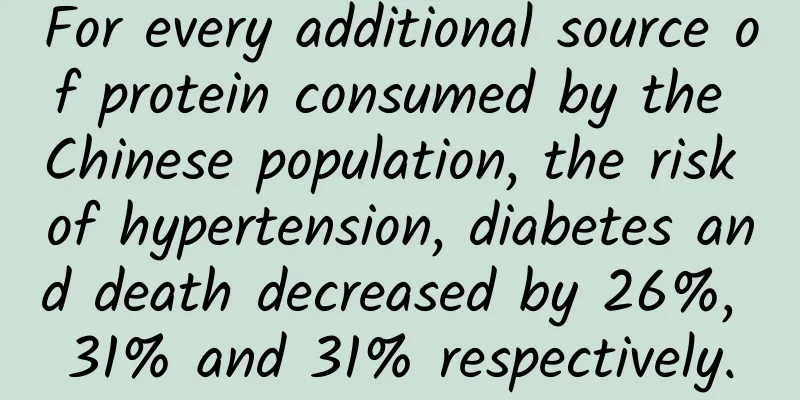It produces 20% of Earth's oxygen, but is now dying...

|
For most life on Earth, they need to breathe oxygen to survive. Most of the oxygen we breathe now is produced by organisms - such as photosynthesis of plants. But the most important oxygen producers are not the trees we are familiar with, but the tiny organisms in the water, one of the most important groups of which is diatoms . Diatoms are extremely small single-cell algae, most of which are only a few microns to tens of microns long, and several of them can be placed on the tip of a needle. But if you observe these small organisms under a microscope, you will be shocked by their exquisite appearance - in fact, these exquisite structures you see are the cell walls of diatoms , also known as its "silicon shell". Diatom shell under a 1500x microscope (Image source: Massimo brizzi/Wikipedia) Unlike plants or animals, diatom cell walls are made of silicon dioxide, or more precisely, hydrated silicon dioxide, the same ingredient as opal (a gemstone). Similar to the play of color in opal, diatom cell walls also exhibit brilliant structural colors. Opal's play of color (Image source: Dpulitzer) Such a hard shell makes diatoms the absolute winner on Earth. There are more than 20,000 known species of diatoms, which are distributed in oceans, rivers, and lakes all over the world. You can even find diatoms in hot springs or the Southern Ocean. Such a wide distribution also brings huge productivity. According to estimates, an average of 20% to 30% of the oxygen in every breath you breathe is produced by diatoms. This figure is even far more than the tropical rainforests known as the "lungs of the earth." While producing oxygen, diatoms are also absorbing large amounts of carbon dioxide from the environment and storing it in the depths of the ocean. "Diatoms are one of the most important plankton in the ocean," said Jan Taucher, a marine biologist at the GEOMAR Helmholtz Center for Ocean Research, explaining his strong interest in diatoms. "Any changes in them could lead to major shifts in the marine food web and even change the ocean's ability to absorb carbon dioxide as a carbon sink." Part 1 Ocean acidification We all know that climate change is threatening marine ecology. Carbon dioxide from the atmosphere dissolves into seawater, increasing the acidity of the seawater. For marine organisms with carbonate shells (mainly calcium carbonate), this is almost a disaster : in acidified seawater, these organisms will consume more energy in the process of building calcium carbonate shells; and if seawater acidification intensifies and the carbonate concentration drops too low, their carbonate shells may even be dissolved - this is the disaster that corals and shellfish in many areas are experiencing. As ocean acidification increases, the carbonate shells of many marine organisms are threatened (Image credit: NOAA) However, for diatoms, the climate change story is much more complicated. Many studies have suggested that diatoms have the theoretical ability to resist ocean acidification and may even benefit from climate change. On the one hand, as a photosynthetic microorganism, when the amount of dissolved carbon dioxide in seawater increases, diatoms can more easily absorb carbon dioxide and increase the rate of photosynthesis. On the other hand, an acidic environment can reduce the dissolution rate of silica, so diatoms can build their own "silicon huts" more easily. The problem is that these are only theoretical speculations. Even single-cell algae have very complex life systems. Further research is needed to know the more specific and possible fate of diatoms under climate change. Recently, Tao Huer and his colleagues discovered that previous discussions on diatoms often missed a key factor, which is likely to threaten the survival of diatoms. Part 2 Silicon in short supply For many plankton in the ocean, the concentration of major nutrients (such as nitrogen or iron) determines their distribution. But diatoms "value" the silicon in seawater more. Silicates in seawater are generally in an unsaturated state, so the shells of diatoms are actually easily eroded and dissolved by seawater. When diatoms are alive, they secrete an organic coating on the outside of their shells to provide protection. However, when diatoms die, this protective coating will be degraded by bacteria. In the process of the shell falling to the deep sea under gravity, the silicon in the shell is also released into the seawater "along the way", which to a certain extent also makes up for the silicon consumed by diatoms in the surface seawater. In this way, the diatom itself plays the role of a "biological pump", transporting silicon in seawater from the surface to the deep layer like a pump, and then transporting it back to the surface of the ocean by the global ocean circulation for the next batch of diatoms. Diatoms under the microscope sparkle like gems (Image credit: Watson & Sons) In order to simulate the changes in the marine environment under climate change, Tao Huer's research team adopted the method of enclosure experiment: they isolated a piece of seawater in each of the five oceans and maintained normal seawater circulation by artificially pumping it in and out. This is like intercepting five huge test tubes in the ocean. Researchers can input different concentrations of carbon dioxide into the test tubes to simulate different degrees of ocean acidification scenarios. The researchers simulated the degree of seawater acidification in the medium emission scenario (RCP 6.0) and the high emission scenario (no measures to control carbon emissions, RCP8.5) in these five test tubes. The results showed that the ratio of silicon to nitrogen in marine sediments increased by an average of 17%. In other words, in more acidic seawater, more siliceous shells fell into the sediments instead of dissolving into the seawater. Part 3 Diatom dominoes Further model studies have brought greater concerns. The distribution of silicon in seawater is mainly affected by two factors: the "diatom pump" and ocean circulation. However, in the case of severe seawater acidification, the dissolution rate of the shells slows down, and more diatom shells will sink directly to the seabed after death and be deposited there for a long time, unable to replenish enough silicon to the upper seawater. The ocean circulation obviously cannot make up for this gap, so the diatoms that grow later will not be able to obtain enough silicon to make their own shells. Ocean acidification will lead to a significant decrease in the silicate concentration in surface seawater (red represents increase, blue represents decrease, image source: original paper) The simulation results show that under the high emission scenario, the silicate concentration in the ocean surface will drop by about 27% in 2200, which will directly lead to a 26% decrease in the number of diatoms. If such a large number of primary producers are lost, other life on Earth will also be greatly affected. In the paper, the researchers are more worried that "the consequences related to ecosystem function and carbon cycle are more difficult to assess", and the current data does not discuss the domino effect on other consumers in the food chain. Image credit: Howard Lynk But in any case, the results of this study warn us about how unnoticed feedback mechanisms in the Earth system can change our predictions of environmental and biological changes - we still don't know enough about how our planet and the life forms on it interact. For Tauchel, this discovery is a poignant surprise: "This kind of surprise reminds us again and again that if we don't respond quickly and decisively to climate change, we will face incalculable risks." Source: Global Science This article has been authorized for reprinting. If you need to reprint, please contact the original author The article only represents the author's views and does not represent the position of China Science Expo |
<<: Food Safety | Eating fruits and vegetables like this will increase their nutritional value
>>: Where does our "body odor" come from? Eating habits can actually change body odor
Recommend
Pufferfish: We don’t produce toxins, we are just the “carriers” of toxins
When it comes to pufferfish, gourmets must have a...
What is the current situation of avian influenza in Sichuan? How to deal with infected poultry? Can humans be infected?
Recently, according to the Ministry of Agricultur...
This uncle! The 67-year-old rescued 4 young people in one go and didn't even breathe when he got to the shore
Four good swimmers from the surf club Being swept...
Why is the operation ineffective? You may be missing these 3 methods!
Every time you sell a product, you should keep re...
Taking Xiaomi and Hammer as examples, we can explain the two pricing logics of products
· There is a classic textbook in American marketi...
Analysis of Tencent Advertising’s Bidding Mechanism
With the development of Internet technology, more...
Can you buy your privacy for 300 yuan?! How terrible is "opening the box"...
Is your privacy still safe? Do you dare to believ...
Only in this way can the iPhone not be monitored
The news that the iPhone can be monitored even aft...
How does information flow advertising use 10,000+ tags for precision marketing?
Different from traditional advertising, the bigge...
What should you do when you try hard to fall asleep but can't?
The lives of modern people are becoming increasin...
I heard that people in Guangdong are buying long johns overnight because they are almost crying from the cold!
Key Points ★ The perceived temperature is actuall...
Smart TVs have entered the deep waters. How can we make useless functions more practical?
With the impact of the Internet on the traditiona...
What exactly is “Ice No. 7”?
Since the news that people can wear short sleeves...
Little Pig Quote: Chongqing SEO Outsourcing Company solves the problem of enterprise optimization
Many companies will have a headache when doing we...
Are operators entering the television industry to save themselves or to disrupt the market?
Today, the domestic TV industry is experiencing a...









